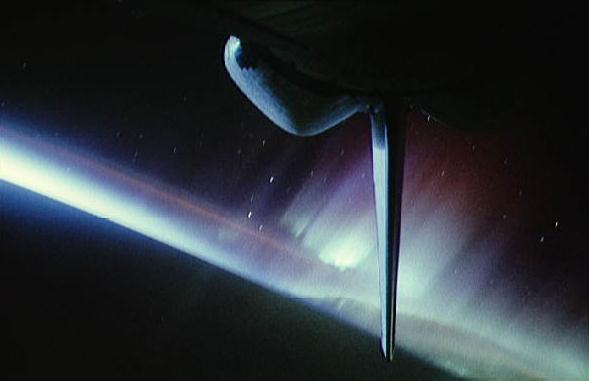Into every satellite a little grunt work must fall. Today you get to read the exceedingly boring but entirely real details of a typical week of satellite construction and project management.
Outreach Work
The flight pins and first mission patches have arrived for the 76 exceptional contributors to Calliope! This week I will be packaging up approximately 76 bundles to mail out. Oh, and I have to write this week's project update-- which you're reading now.
Assembly Work
To build the satellite, I have to solder electronics parts onto a PCB board. This is a straightforward task requiring only a modicum of coordination, and I've been doing the soldering work in fits and starts over the past months. However, I hit a snag with soldering parts. My tried and true pistol-grip soldering iron has become bent, so I picked up a new pencil-type iron. Alas, on a test project, the new iron failed. I ended up with solder 'whiskers' on some of the connections. Whiskers is an ugly and known case of 'bad soldering'. So I need to get a new iron and test it out before I risk further soldering on real Calliope parts.
I've been holding off putting the actual radio transceiver and amp on the radio board, and the BasicX-24 onto the computer board, because those are the only components that I do not yet have duplicates (due to their high cost). I don't want to screw them up. Still, I would like to put them in this week or next. Ideally, I can finish one set of all the boards to begin integration and testing.
Integration Work
Integration is often the hardest and most detail-oriented part of any mission. In theory, I have all these circuits and sensors and pieces that work okay in isolation. Putting them all together and ensuring they talk to each other-- that'll be the trick.
In particular, I need to tackle the BasicX-24 programming in earnest. I had tested the sensors earlier using the Midi rig to ensure the sensors worked. That means the sensors were hooked into the ICube-X-recommended interface and then hooked into a laptop computer.
However, for actual flight, I need to hook them up to the BasicX-24 board that will actually fly, and that is substantially less powerful and less intuitive than using the full-blown laptop with GUI-based software that I tested under. It's sort of like switching from camping in a mobile home to backpacking with a tent and sleeping bag. Sure, it's all rough living, but one is more bare bones than the other.
To jump-start the programming, I have the IC2 library and sample code for the BasicX-24, but I need to get it all working with the sensors in earnest. I also need to ask a satellite expert named Gerard for his sample radio code. Reuse existing code is the name of the game here, not just because it's easier, but because I'd rather use code that works and has been tested, then create stuff from scratch.
Certification Work
As far as when Calliope will launch, Interorbital is chugging forward with their test flights, they have FAA permits for their first test suborbitals. Calliope, being orbital, flies after they finish verifying their design with these 'up then down' flights. Interorbital have a strong "we will fly when we are ready to fly" ethos, so an exact flight date isn't nailed down. I do need to file for radio permission with the IARU in advance, so there's a bit of guessing on launch dates (on my part) to proceed with the legalities needed. More when I know more on this.Photo Work
My spouse briefly became enamored of setting up a new photography rig for documenting the Calliope build process. Her approach would be better than my current '2 lamps and a digital cam' approach, no doubt. However, in all things I favor 'getting it done' over 'doing it better', so I will continue documenting the build using the earlier way until the new photo rig is ready.
Unfortunately (for you, the reader), I tend to take lots of pictures but not get to posting them. Some of the pictures are being saved for specific future writeups on 'how to do X' (or Y or Z). Some of me not posting is the same reason why I have an easy time emailing but not sending a paper letter. Take the pic, download it, decide which to use, upload to the column, work out formatting, get frustrated when the computer eats the pic, try to upload again, find out the session timed out, ack!
So, apologies for being a writer and builder first. There will be pictures, possibly over at the main Calliope gallery first.
 |
| ISS photo of streamers in the ionosphere (aka auroras), also, a good example of why it's faster to grab a photo from the web than to shoot my own. Click on the photo for more details. |
Day Job
As this project is a part-time effort, I do not work on Calliope every day. Being the stay-at-homeparent, doing freelance work, my volunteer work, the occasional project pitch, networking for my paying work, all those sundry elements take up much of my time. Calliope things take longer than it might in a commercial or academic environment. This is part of the story, though. We're not just in an era when someone can build a satellite in their basement, we're in a era when they can build it as a hobby, not a career.
Goal
All of this is aiming so we-- a global 'we', an 'anyone' we-- get to hear the rhythm of the ionosphere and get a sense of just how active space is.
Stay tuned!
Launching Project Calliope, sponsored by Science 2.0, in 2011
News every Tuesday at The Satellite Diaries, every Friday at the Daytime Astronomer




Comments